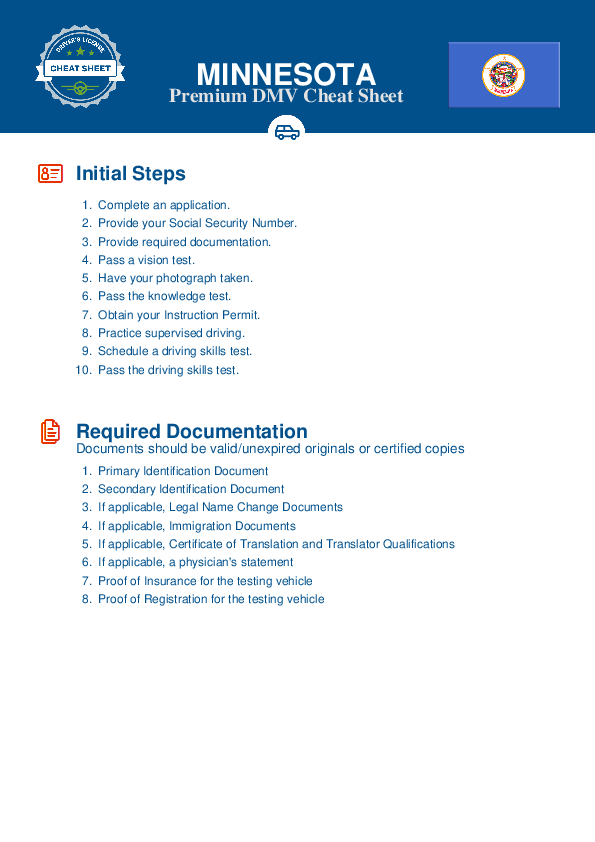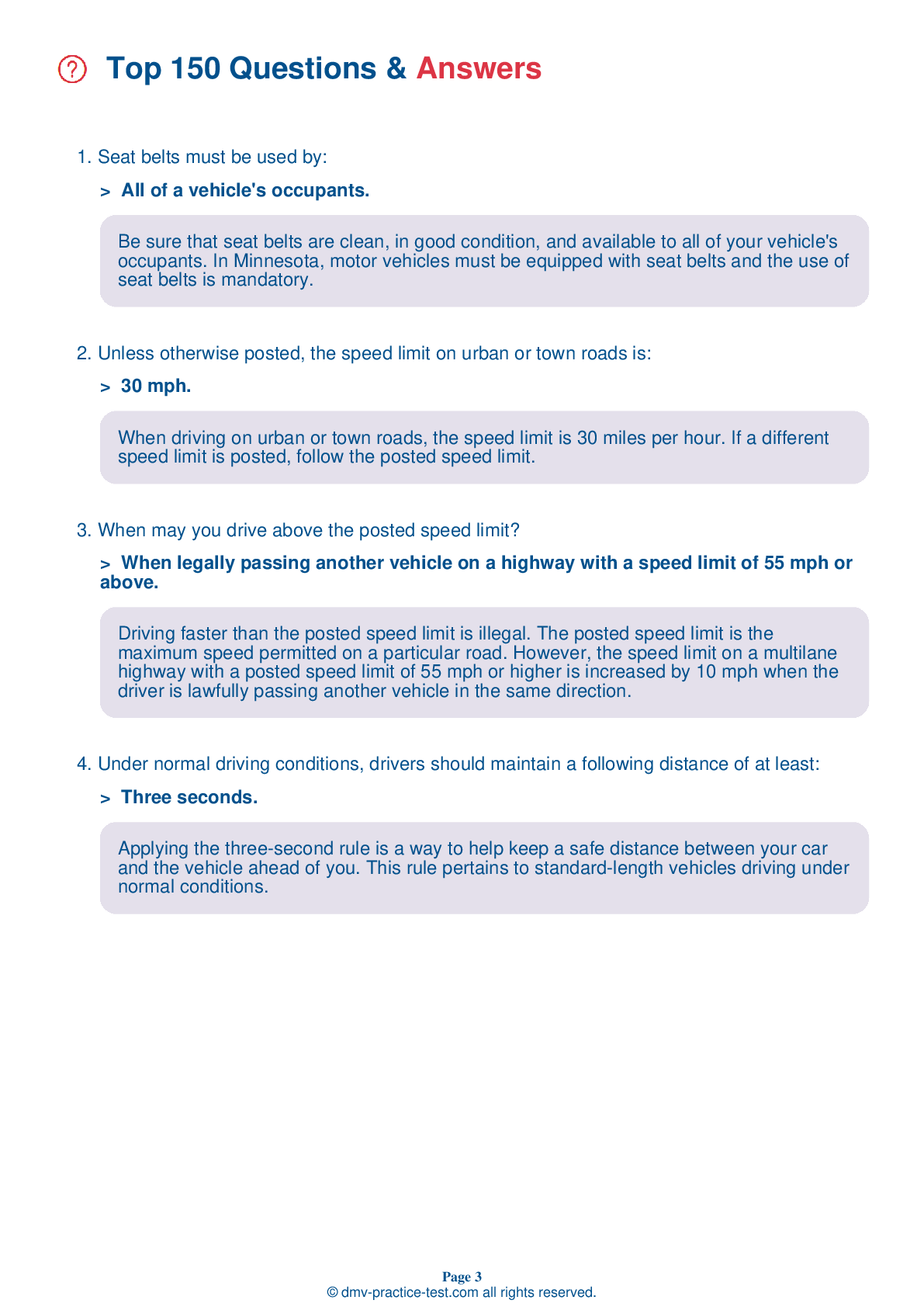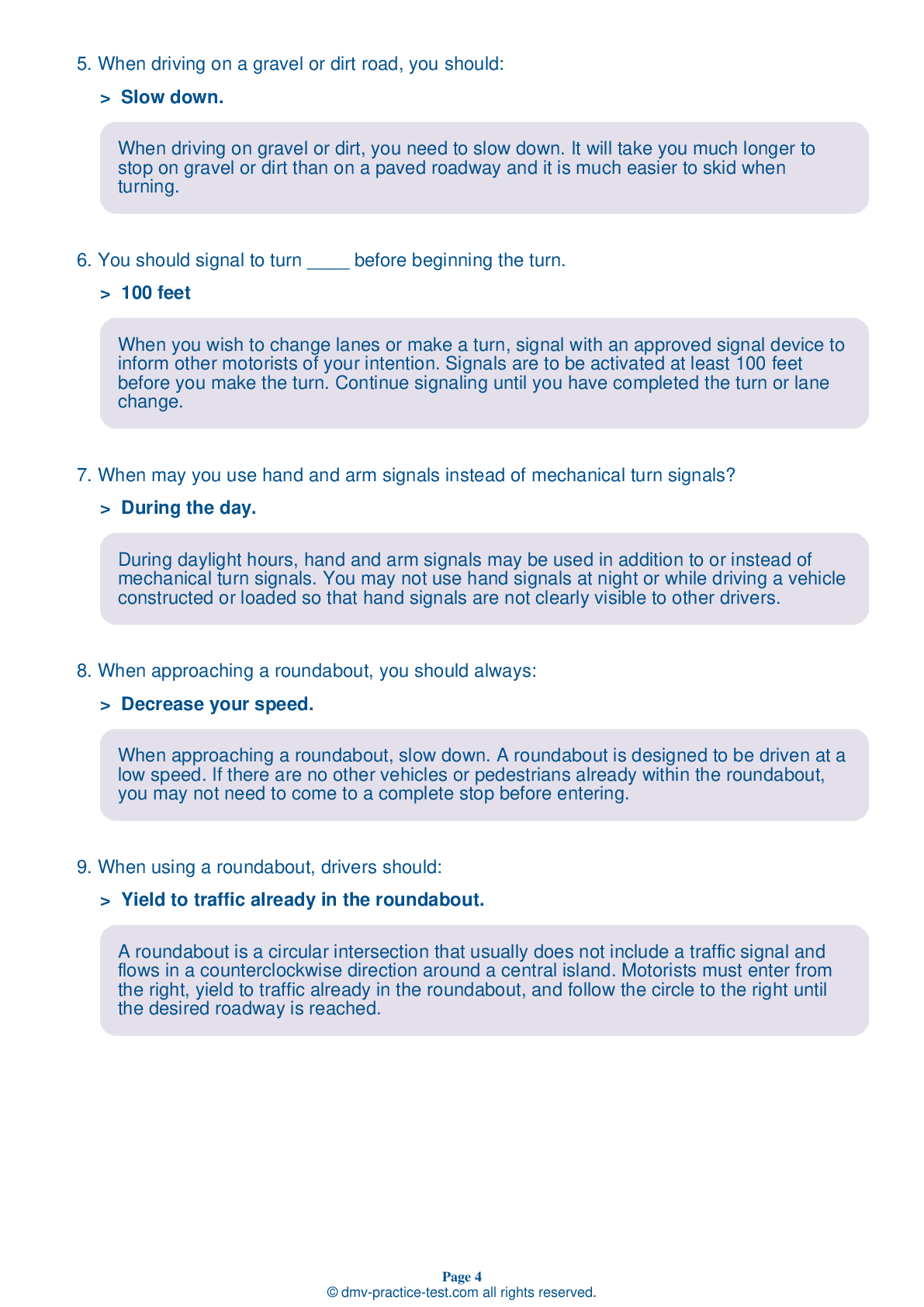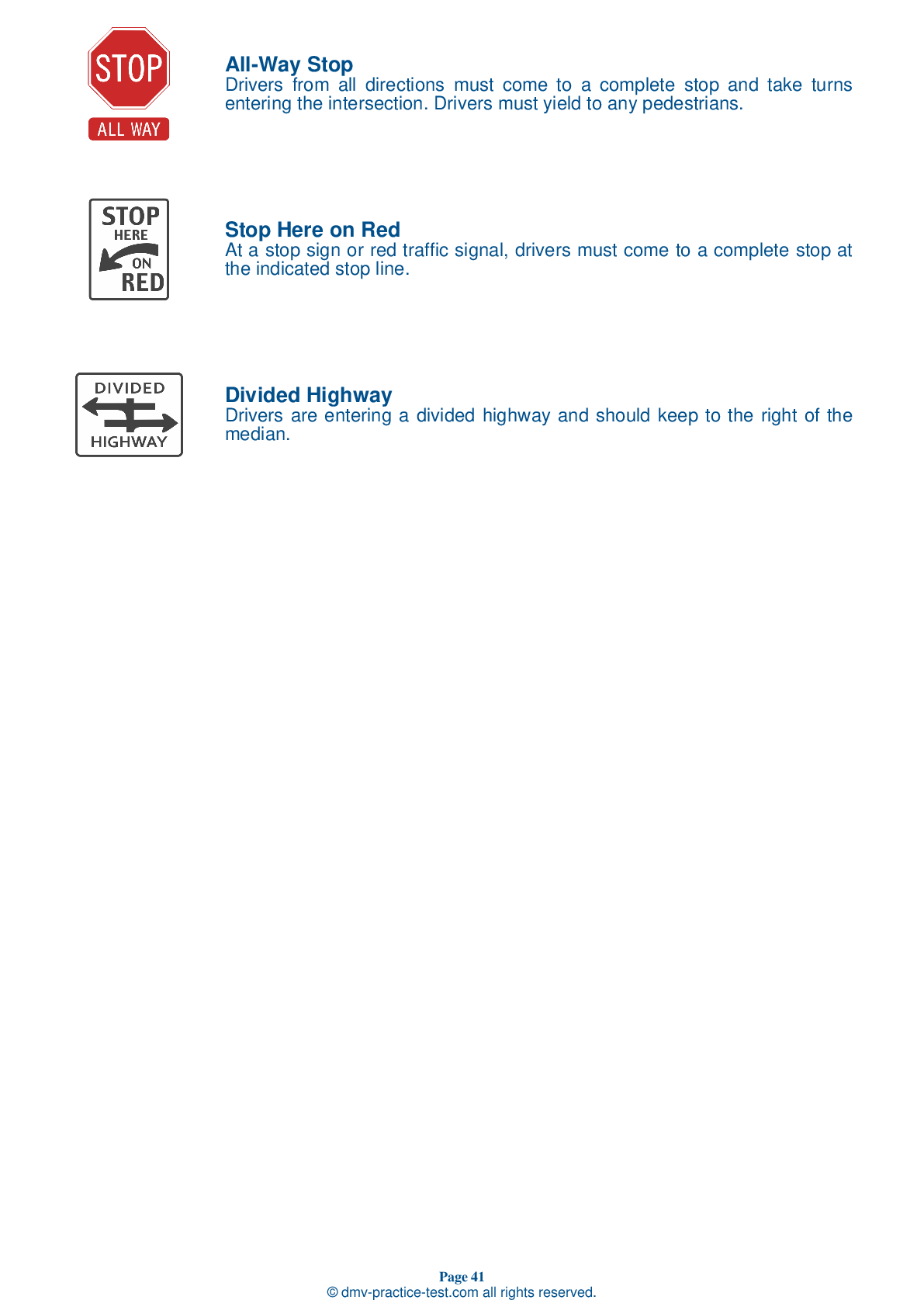FREE Minnesota DMV Practice Test #17 Page 3 of 5
The Minnesota DMV practise examinations have been updated for January 2025. It includes questions based on the Minnesota Driver Handbook's most essential traffic signals and laws for 2025. Use actual questions that are very similar (often identical!) to the DMV driving permit test and driver's licence exam to study for the DMV driving permit test and driver's licence exam.
On the practise exam, each question gets a tip and explanation to help you remember the concepts. The written component of the official Minnesota DMV test will include questions about traffic rules, traffic signs, and driving statutes, as well as knowledge from the Driver Handbook.
To obtain a passing grade, you must correctly answer 32 of the 40 questions. To help you prepare for your instruction permit or driver's licence, take our Minnesota DMV practise test.
The DMV exam is available in several languages.
Using any kind of testing assistance will result in an automatic fail, and the DMV may take additional action against your driver's licence, so stay away from it.
17 . To avoid collisions with vehicles in your blind spots, you should:
Before turning or changing lanes, turn your head and glance over your shoulder in the direction of your move to see if your blind spot is clear. Never rely on your mirrors alone.
18 . Pennant-shaped signs indicate:
Pennant-shaped signs usually indicate no passing zones. Text will also be on the sign to confirm that it is a no passing zone.
19 . When approaching a school bus stopped with its stop arm extended, drivers should:
When approaching a stopped school bus that is using its stop signal, a driver is required to come to a complete stop. They should not proceed until the stop arm is withdrawn.
20 . When using a roundabout, drivers should:
A roundabout is a circular intersection that usually does not include a traffic signal and flows in a counterclockwise direction around a central island. Motorists must enter from the right, yield to traffic already in the roundabout, and follow the circle to the right until the desired roadway is reached.
21 . You have the right-of-way when turning left on which of the following traffic signals?
A green steady arrow means you may pass through the intersection in the direction that the arrow is pointing. Oncoming traffic is required to stop for turning traffic.
22 . A driver who is taking a non-prescription drug should:
Many over-the-counter medications can affect your ability to drive safely. If you take medication, even a remedy for colds or allergies that is not prescribed, check the label for warnings about its effects. If you are unsure, ask your doctor or pharmacist about driving while on the medication.
23 . This sign shows one type of:
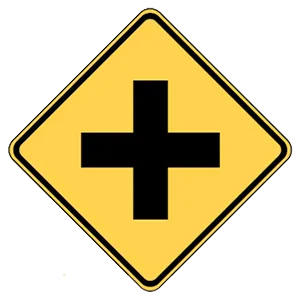
This sign indicates that an intersection with a crossing road is ahead.
24 . If an aggressive driver cuts you off, you should:
If an aggressive driver cuts you off on the roadway, stay calm and get out of their way. Trying to get even with an aggressive driver risks escalating the situation and increasing the danger.
See the exact questions that will be on the 2025 Minnesota DMV exam.
99.2% of people who use the cheat sheet pass the FIRST TIME
LT gives us an insight on how the cheat sheet provided her with all the study questions she needed before taking her test.
Joe initially studied with the handbook and failed his test, he eventually found us online, studied and pass his test the first time around.
